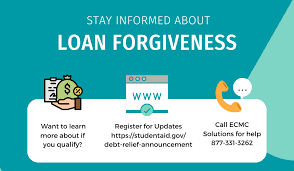The proposed pay driven reimbursement program in the Biden Understudy Obligation Help Plan could make school free, or close free for a many individuals and a lot a greater amount of them could set off for college.
How Understudy Loan Pardoning Will Change School Funding
The proposed pay driven reimbursement (IDR) program in the Biden Understudy Obligation Help Plan "could drastically change how individuals finance school," as per Kent Smetters, workforce overseer of the Penn Wharton Financial plan Model, an objective exploration drive that dissects the monetary effect of public strategy. "It could nearly make school free, or close free, for a many individuals. Much more individuals could attend a university." Smetters, who is likewise Wharton teacher of business financial matters and public strategy, mentioned those objective facts while examining PWBM's investigation of the obligation help plan as of late on the Wharton Business Everyday public broadcast on SiriusXM.
The subtleties of the new arrangement
Pay based reimbursement plans have long existed inside the US Division of Schooling, yet the new arrangement will be "substantially more liberal than existing projects," Smetters noted. The new rule would expect borrowers to pay something like 5% of their optional pay month to month on undergrad advances, contrasted with 10% accessible under the latest pay driven reimbursement plan.
It would likewise raise how much pay that is viewed as non-optional pay and accordingly is safeguarded from reimbursement. It expects to ensure that no borrower procuring under 225% of the government destitution level — about what might be compared to a $15 the lowest pay permitted by law for a solitary borrower — should make a regularly scheduled installment, as per a White House note on the arrangement. Besides, it would cover the borrower's neglected month to month interest so that no borrower's credit equilibrium will develop however long as they make their regularly scheduled installments — in any event, when that regularly scheduled installment is zero on the grounds that their pay is low.
ALSO READ THIS !!
Government understudy loan reimbursements have been stopped since Walk 2020 as a feature of Coronavirus help measures, and the new arrangement expands that delay "a last time" through December 31, 2022, with installments continuing in January 2023. To smooth that progress to reimbursement, the new arrangement will offer obligation wiping out of up to $20,000 to Pell Award beneficiaries and up to $10,000 to non-Pell Award beneficiaries, inasmuch as their pay is under $125,000 (for people) or $250,000 (for families). One more element of the new arrangement is to excuse credit adjusts following 10 years of installments, rather than 20 years, for borrowers with advance surpluses of $12,000 or less.
Greeting to Maximize Credits?
Smetters featured the components of the new pay driven reimbursement plan that are liberal: covering regularly scheduled installments to 5% of optional pay; rethinking optional pay to make it a lot more modest than it was under current regulation; and the public authority will "basically make installments for your benefit so your credit adjusts never develop, regardless of whether you're making installments not exactly the loan fee."
Smetters featured the elements of the nUnder existing projects, an understudy borrower's obligation would increment on the off chance that a borrower doesn't make full interest installments; it would be pardoned later in the wake of arriving at as far as possible - typically 20 years, Smetters proceeded. "The thought was basic: assume that your pay expanded much later, then, at that point, you would be supposed to take care of that obligation. One justification for the low recruits may be a direct result of this component — i.e., you are gathering a ton of obligation at higher financing cost that you would ultimately need to pay off."
Under the new IDR program, that impact would vanish, Smetters brought up. "Thus, regardless of whether you figured your pay could build, you would in any case need to exploit the new IDR meanwhile. That is the justification for why there is basically no drawback to joining."
"I've previously had individuals explain to me why even set up a 529 arrangement any longer," Smetters noted. (A 529 arrangement is a duty advantaged plan to support putting something aside for advanced education). "Bunches of understudies have even referenced to me [that they] ought to take out however much obligation as could be expected, in light of the fact that installments will be seriously covered under the new pay driven reimbursement program."
"Assuming individuals are truly objective, and assuming they truly trust that this program would stay close by, it ought to generally change how school supporting is finished, in light of the fact that a great deal of understudies would have the impetus to maximize credits for paying for school," said Smetters. "Why work that mid year work? Why have your folks or grandparents contribute?"
Expenses Could Cross $1 Trillion
Smetters said he didn't anticipate that the White House should deliver information on the expenses of such a liberal program. Yet, the examination that PWBM financial expert Junlei Chen created under the direction of Smetters assessed the expenses of the program over its 10-year spending plan window: Understudy loan obligation retraction will cost between $469 billion to $519 billion, contingent upon whether existing and new understudies are incorporated; around 75% of that advantage will go to families making $88,000 or less each year. Credit abstinence for 2022 will cost an extra $16 billion.
This is Biden's Expansion Plan‽
Understand MORE
Under severe "static" suppositions about understudy acquiring conduct and utilizing take-up rates inside existing pay based reimbursement programs, the proposed new IDR program will cost an extra $70 billion, expanding complete bundle expenses to $605 billion, the review assessed. Be that as it may, in view of how the IDR program works out and changes in understudy getting conduct, it could add another $450 at least billion, in this way raising all out plan expenses to more than $1 trillion, the review added.
The elements in the new IDR proposition could strongly increment take-up rates, the PWBM study noted. PWBM's ongoing estimations don't for a moment even record for this impact yet, Smetters said. "They just record for the higher take-up rates in the pay based program, accepting existing funding done by understudies. Our expense numbers will get enormous once we represent the moving toward really acquiring."
A larger part of qualified borrowers don't sign up for existing projects, a past PWBM brief had found. PWBM plans to concentrate on the distributional impacts of the new IDR program and related viewpoints in later reports.
The government understudy loan portfolio right now adds up to more than $1.6 trillion, owed by around 43 million borrowers, as indicated by a Forbes report. Government understudy loans make up by far most of American instruction obligation — around 92% of all exceptional understudy loans is administrative obligation. Around 5% of understudy obligation was no less than 90 days delinquent or in default in the final quarter of 2021, the report added. That number is falsely low since bureaucratic understudy loans are presently in patience, it pointed out.ew pay driven reimbursement plan that are liberal: covering regularly scheduled installments to 5% of optional pay; reclassifying optional pay to make it a lot more modest than it was under current regulation; and the public authority will "basically make installments for your sake so your credit adjusts never develop, regardless of whether you're making installments not exactly the financing cost."
earn online from mining :


